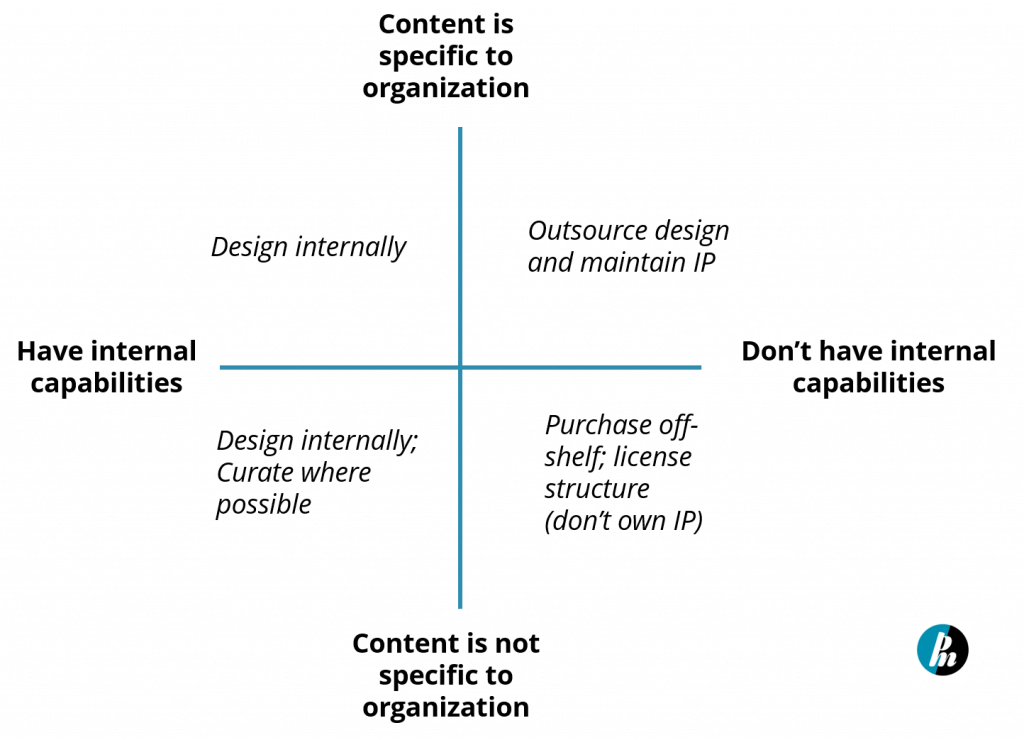I started sewing when I was about 10 years old. In high school, I learned how to read a pattern, and my mom started buying me any fabric to make myself clothing. There was a great store in Kitchener, Duthler’s Textiles, and I must have gone there every week. Looking back, some of the things I sewed and wore must have been dreadful. But, I was learning, and I had to figure out what I could make myself and what was better to buy. I learned it was better (and less expensive) to buy casual clothes and worth taking the time to make specialty clothes – clothes for work, costumes for my kids, cushion covers, and my wedding dress.
Figuring out how to source training can be a bit like figuring out what clothing to sew and what’s better to buy. I created this model to untangle some of the considerations.
Sourcing Training
Consider your internal capabilities
- Do you have folks who can design quality training, whether it’s in-person, online or elearning?
- Think about their capacity – do they have the time to devote to designing the course? What other commitments do they have?

Consider the content.
- Is the content specific to your organization (e.g., a proprietary system or a process that needs to reflect your culture, values, etc.)?
As you look at the four options these axes create, you can see there are other considerations.
- Avoid ‘reinventing the wheel.’ Instead, identify the opportunities to curate content. There are so many videos and articles online – look for something that summarizes your model or concept and incorporate it instead of redesigning something.
Remember always to attribute the source and respect copyright! - If you’re designing internally, it’s because the content is specific to your organization. Identify if there are any subject matter experts you can work with.
- When outsourcing the design, consider the Intellectual Property (IP). Pay more for the design if you want to own the content and implement it in your organization without ongoing licensing costs or other fees.
- Purchase off-the-shelf training if the content is generic—plan for ongoing licencing or subscription costs to continue using the courses.
In case you missed it
I’ve shared some additional posts online. Here they are in case you missed them.
- What’s the difference between Instructional Design and CurriculumDesign (video post)
- How to brainstorm online (link)
- What’s the difference between Curriculum Design and a Learning Strategy (video post)
- Two examples of when to create a learning strategy (video post)
- Online polling to engage remote employees (link)
- Tips for structuring online small group discussions (link)
- Learning Strategy Tip #1 – Know your learners (video post)
I’ll be sharing Learning Strategy 10 tips on LinkedIn over the upcoming weeks.




